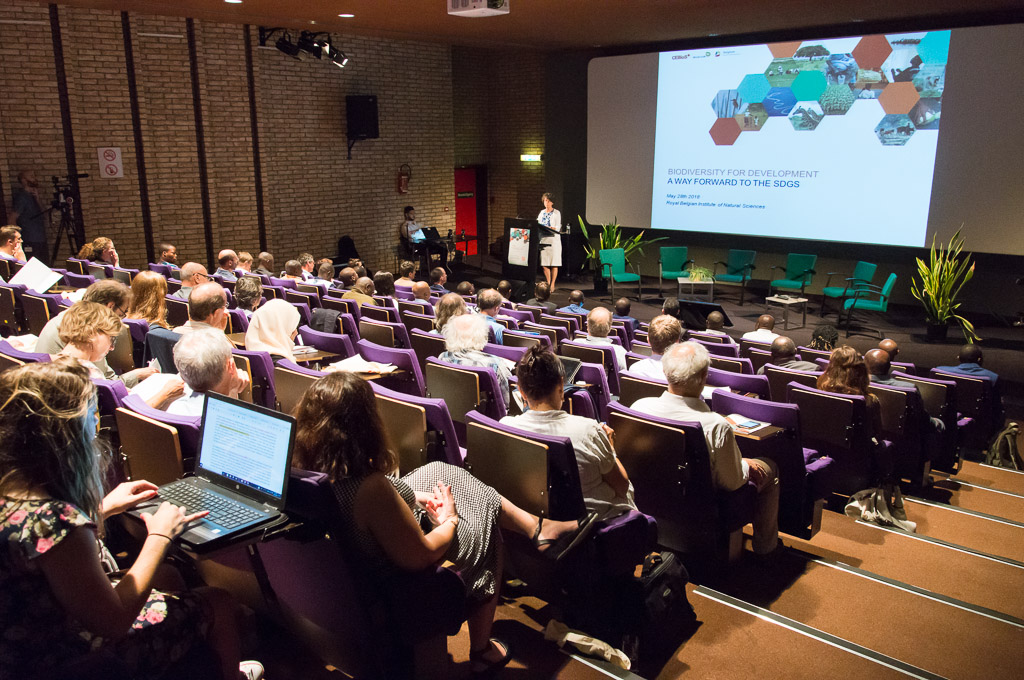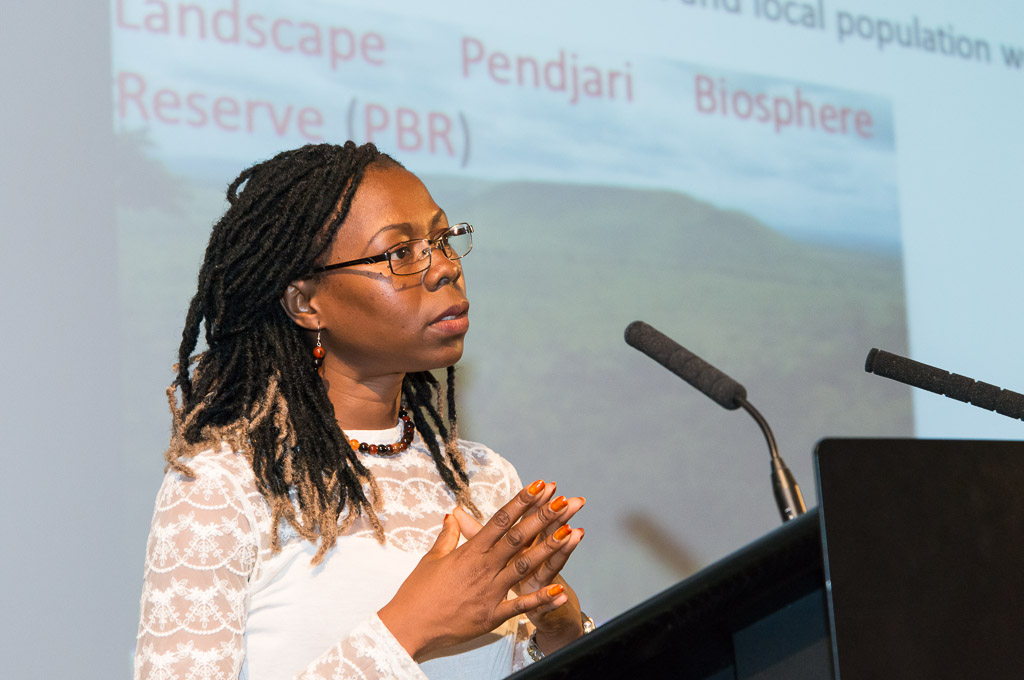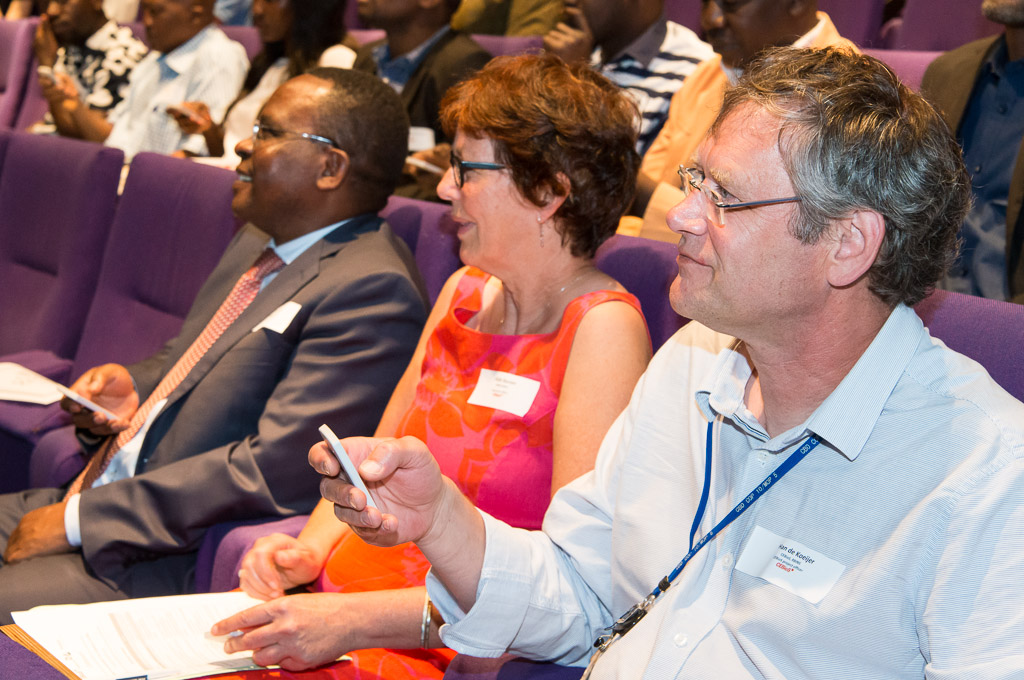Events
- ALTER-Net & EKLIPSE Conference: The EU Biodiversity Strategy Beyond 2020
- Biodiversity for Development - A way forward to the SDGs (5 years of the CEBioS programme)
- The Nagoya Protocol in the framework of development cooperation
- Education meets biodiversity in DRCongo
- Biodiversity & development, a global heritage
 Summary of the colloquium
Summary of the colloquium
Here is a summary of the colloquium held by CEBioS on May 28th 2018 at the RBINS.
| Release date | 20/06/2018 |
|---|---|
| Contributor | Lucie Ongena |
| Geographical coverage | brussels, Belgium, |
| Keywords | event, biodiversity, development, colloquium, |
CEBioS-colloquium ‘Biodiversity for development. A way forward to the Sustainable Development Goals’, May 28th 2018, RBINS, Brussels
Five years of successful integration of biodiversity in the Belgian development cooperation forms the basis for further cooperation. In the week of 28 May to 1 June 2018, the involved Belgian and foreign partners gathered in Brussels. The achievements were presented in a public colloquium on May 28th. The former collaborations were evaluated as very successful, and the next five years of collaboration were prepared. The colloquium was a big success, and involved the active participation of the public in an interactive way. CEBioS, a unique design in many ways!
Capacities for biodiversity and sustainable development (CEBioS)
How is biodiversity integrated into development cooperation? How can the support of the Northern countries to protect biodiversity in the South contribute to the battle against poverty in developing countries and to the achievement of Sustainable Development Goals (SDGs)? These key questions also live in the Belgian political and scientific world, and led to the establishment of the CEBioS program five years ago. CEBioS ("Capacities for biodiversity and sustainable development") is a program of the Royal Belgian Institute of Natural Sciences (RBINS), funded by the Directorate General for Development Cooperation (DGD) through a cooperation protocol between the Ministry of Science Policy and the Ministry of Development Cooperation.
The CEBioS program promotes the conservation and sustainable management of biodiversity with the aim of eradicating poverty in the partner countries of the Belgian development cooperation. The activities include institutional cooperation with partner organizations, calls for proposals, organization of seminars and training, policy support, targeted projects, public awareness and publications. The main partner institutions are in Africa (Benin, DR Congo, Burundi), South America (Peru) and Asia (Vietnam), but CEBioS also works with many other partner countries, mainly from Africa. More information on CEBioS can be consulted on this website (mission/vision here).
Five years of collaboration bundled in a day
After five years of cooperation with the southern partners, it was time to list the achievements, evaluate and present the experiences from those years to the public, and answer the key questions that were presented at the start of this text. This was the goal of the previously unpublished colloquium "Biodiversity for development, an essential path to sustainable development goals", which was organized on Monday 28 May in the Royal Belgian Institute of Natural Sciences (Brussels). The colloquium brought together the Belgian and foreign actors in development cooperation and the preservation of biodiversity, and the presentations illustrated that it has been five very successful years! And with 140 registered participants, the colloquium itself could also be considered a success.
After introductions by Mrs. C. Pisani, General Director of RBINS, Mr. T. Neijens, Deputy Chief of Staff of the Development Cooperation Unit, Cabinet of the Minister of Development Cooperation (Belgium), and Mr. L. Janssens de Bisthoven, coordinator of CEBioS, the program provided a balanced selection of foreign and Belgian speakers who could each highlight different aspects of the various collaborations. In this way, the public was presented a comprehensive overview of the CEBioS activities in the partner countries, and therefore of the way in which Belgium actively strives to integrate the preservation of biodiversity in its development cooperation program. The audience also had the opportunity to get an idea of the wide range of actions taken by Belgian organizations, working alongside CEBioS for poverty reduction and sustainable development.

Engaging and diverse
From the application of global programs and mechanisms (e.g. Convention on Biological Diversity, Nagoya Protocol, Clearing House Mechanism) to detailed site-specific case studies, from coastal plains to mountain forests, from Benin to Burundi and from Vietnam to Peru, the colloquium made very clear to the audience that CEBioS is active on all levels and in all places where established and potential partners require assistance in building up the theoretical and practical knowledge required in the combined battle for biodiversity conservation and against poverty. Way too many examples to list here, but the presentations, the presentation abstracts and a selection of pictures can be consulted on this website. It was very inspiring to listen to all these engaging speakers, that were clearly very passionate about their respective missions and the kind of people we need to turn the tide! They are also all very determined to continue on the chosen path! To that end, representatives of the partner institutes from Benin, the Democratic Republic of Congo, Burundi and Morocco stayed all week in Brussels after the colloquium, to prepare the next five years of collaboration.

Audience interaction
At the colloquium, the opinion of the public in relation to a number of key questions was also sought in an interactive way. By building in two sessions during which the audience could directly communicate their response to a number of multiple-choice questions, one session at the start and one at the end of the colloquium, and comparing the answers of both sessions, it was possible to describe the audience’s opinions and estimate to what extent they had come to different insights during the course of the day. The response of the audience was translated to comprehensive statistics and presented in real time during the final session of the colloquium, and was simultaneously discussed by an expert panel. Although the colloquium largely gathered the already converted, it was very encouraging to note the overwhelming proportion of ‘positive votes’ (categories ‘agree’ and ‘strongly agree’) for statements such as ‘Biodiversity preservation contributes to the reduction of poverty in developing countries’, and ‘Economic development and biodiversity preservation are compatible’. That an even larger proportion of the public understood and supported these messages after the colloquium than before, is also illustrative for the success of the event! It was also very nice to notice that the majority understands that the management of biodiversity in the Global South is a shared responsibility of many actors, including the public sector (centralized or decentralized local government institutions, international development aid), the private sector and the civil society (academia, NGOs, community organizations). Between the morning and evening sessions, there was also a small but noticeable difference in the reactions to the statement that the ‘Belgian development cooperation sufficiently mainstreams biodiversity in its activities’. In the morning most people disagreed with the statement or were neutral towards it, but the percentage of people that agreed had slightly risen during the day.

See you in five years for the next overview of CEBioS’ successes in the battle for biodiversity conservation and against poverty?
Kelle Moreau, science communication, Operational Directorate Natural Environment, Royal Belgian Institute of Natural Sciences
 This site uses cookies in order to function as expected. By continuing, you are agreeing to our
This site uses cookies in order to function as expected. By continuing, you are agreeing to our 






